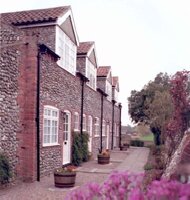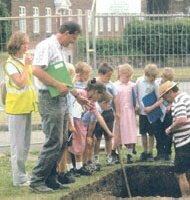Housing


Houses are among our most important historic assets. Historic housing in all its forms, varieties and ages, helps to define an area’s sense of place and meaning; it forms a familiar part of local character and identity, and as a result is often valued by the local community. Housing is often what makes a locality distinctive or even unique – characteristics that should be carefully considered when decisions on future development are being made.
Some 4.4 million houses, representing around 20 per cent of the total stock, were built before 1919. Some of these have been designated as listed buildings or lie within conservation areas and are therefore protected by a range of planning controls, but the majority of these buildings do not receive any form of statutory protection. For example, nineteenth century terraced houses provide a number of distinctive national building types but due to their ubiquity relatively few are listed. They nevertheless play a central role in establishing local character in many English villages, towns and cities.
The adaptation and reuse of historic buildings is also environmentally sustainable, as the existing housing stock represents a huge investment in embodied environmental capital. Reuse also reduces the amount of energy and resources expended on new development and avoids high levels of waste that can be generated by construction projects.
Sometimes, it is only after a place has been altered that its value is realised. Development decisions, such as those affecting areas containing historic housing, need to be taken from a position of informed understanding of the historic environment in order to preserve local character and distinctiveness. This should form part of the overall analysis that lies behind the masterplanning and design process.
Low Demand Housing and the Historic Environment
There are around one million homes affected by low demand and abandonment in northern and midland areas of England. Over recent years, the Government has addressed this issue with the creation of nine Housing Market Renewal Pathfinder organisations to tackle the most acute problems and provide models for successful renewal elsewhere. This guidance shows how an assessment of the local historic environment can develop further understanding of local character and its significance, and use it to help deliver the most sustainable outcome at the neighbourhood level in these areas.
Affordable Rural Housing
High house prices in recent years have made it increasingly difficult for people to get on the housing ladder or to rent a home at a market rent. In rural areas this has become a particularly acute problem for the young and others on low incomes with only 5% of homes in rural areas are affordable (compared to the national average of 23%). In June 2009 the Government announced a target to build 20,000 new affordable homes in England over next two years, including a significant increase in rural affordable homes. English Heritage supports the Government’s aim and, in has issued guidance Affordable Rural Housing and the Historic Environment intended to help schemes to complement and enhance the historic character of our market towns, villages, hamlets and farmsteads.
Homes with History
Good housing schemes, those that build on the past and give it new relevance in the present, can play a major role in fostering flourishing and successful communities. People enjoy living in historic buildings with character and distinctiveness, while the community in general can benefit from the reuse and regeneration of areas and buildings that may form an important part of their locality’s fabric and history. This booklet, produced by English Heritage in association with the Housing Corporation and the Institute of Field Archaeologists, contains advice for social landlords in integrating the historic environment within affordable housing schemes.
Home Information Packs (HIPs)
It is now compulsory for anyone selling a house to put together a Home Information Pack for potential home buyers, which should include recommendations for carrying out energy efficiency improvements.
English Heritage supports the Government’s aims to improve energy efficiency in existing buildings, and believes that most traditionally constructed homes are capable of improvement in this area. We have produced a series of guidance notes aimed at Home Inspectors and Energy Assessors, together with a new website designed specifically at the owners of such buildings to enable them to understand more about the implications of climate change and ways to save energy.
What's New?
-
The National Heritage List for England is now live on the English Heritage website.
-
Welcome to the HER21 page. This page offers access to the full suite of HER21 project reports.
